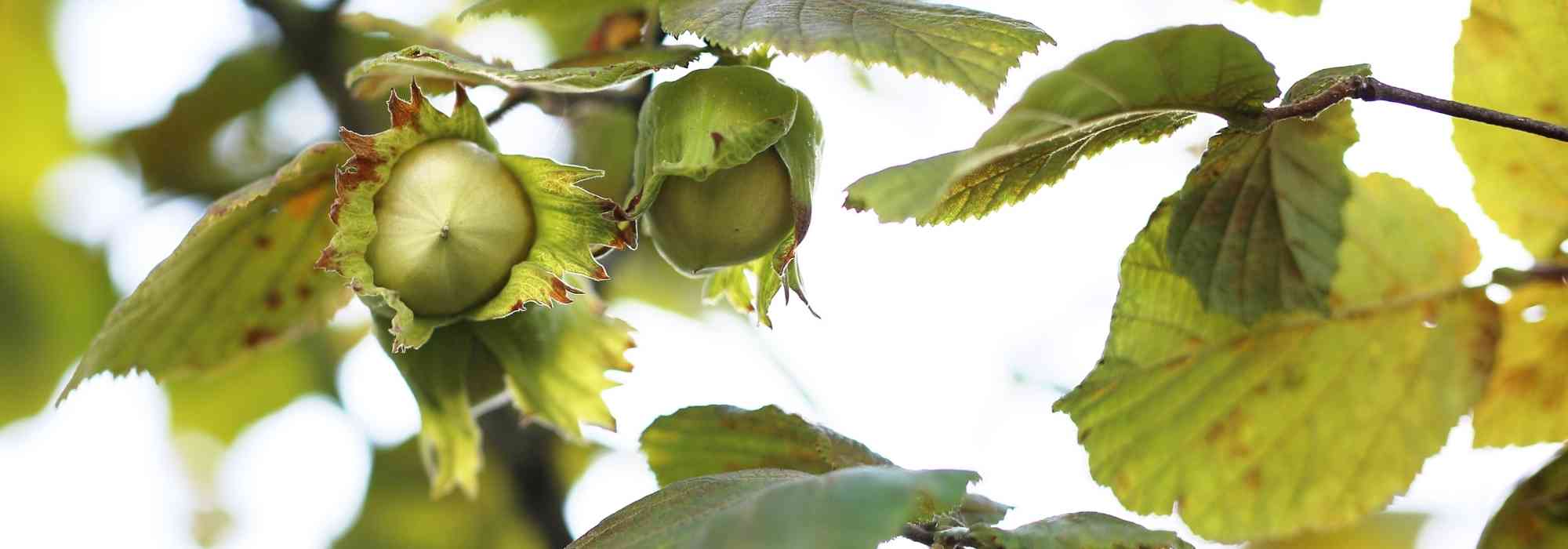
Choosing the right hazel: buyer's guide
Find the variety best suited to your garden
Contents
Hazel, Corylus in Latin, often called coudrier, an ancestral and emblematic bush, is appreciated not only for its dentate foliage and very rustic bushy habit, but also for the beauty of its winter flowering, its brightly coloured trailing aments, its lovely autumn colours, and… its delicious hazelnuts!
As much an ornamental tree as a fruit tree… it offers many benefits in the garden. It is, among other things, one of the trees that retains foliage the longest, grows quickly, and in any sufficiently well-drained soil, thoroughly hardy, robust, long-lived, sheltering a noteworthy small wildlife in the garden. There are so many varieties that it is not always easy to choose the one that will meet all our selection criteria.
Looking for a productive fruit tree, or is it primarily the ornamental aspect and the colour of foliage and aments that appeals to you? Do you have a large garden or a small terrace? Browse our buying guide to find the hazel made for your garden!
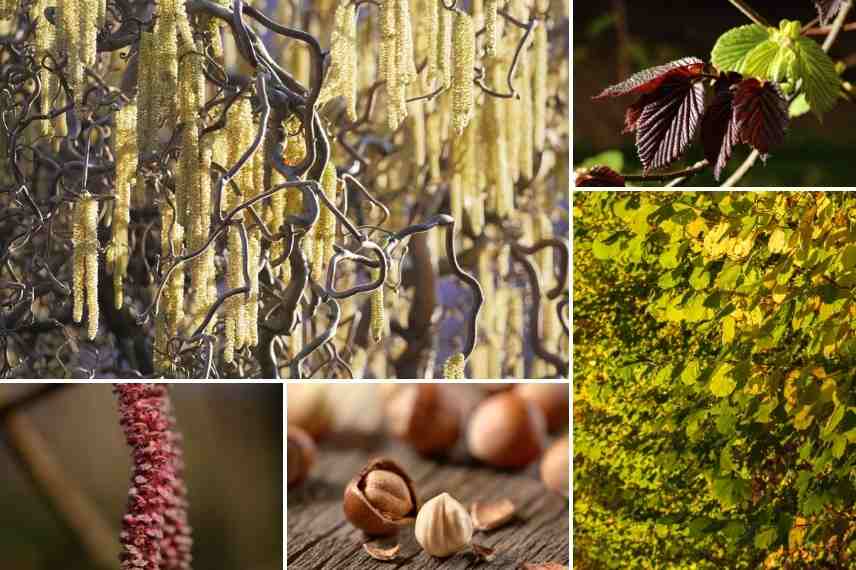
→ Also discover our comprehensive guide on the Hazel
For its shape
Classified both among ornamental bushes, ornamental trees and fruit trees, hazel takes very diverse forms and sizes. It is a multi-stemmed bush that has several very slim trunks, its appearance resembling a coppice shoots, but denser.
Among about fifteen species in genus Corylus, five distinct silhouette types can be distinguished, each with a very different personality:
- Corylus avellana : most widespread common hazel, with a broad habit, ultimately reaching 5 m to 7 m high, and up to 4 m wide. It has a multiple trunk (coppice shoots), with erect branches that arch as they age giving it a more rounded habit. Leaves turn beautiful shades of yellow to yellow‑orange in autumn before falling.
- Corylus avellana ‘Pendula’ has a very graphic and original weeping habit for a hazel. At 3 m tall, it remains rare and should be planted solitary to best appreciate this incredible habit.
- Corylus maxima (also known under names such as Grand filbert, large filbert or Lombardy hazel): this hazel resembles Corylus avellana in many respects, although larger (10 m with a spread of 5 m at maturity). It also stands out for larger leaves, aments and hazelnuts. It is also even hardier. About ten varieties are available, including the purple hazel, very popular for creating bocage hedges at back of garden (this one being smaller, 4 m high). It includes a purple‑leaved variety Corylus maxima ‘Purpurea’
- Corylus colurna or Turkish hazel (also called Constantinople hazel), one of best known, comes from Asia Minor and Eastern Europe. It has a typically symmetrical pyramidal habit, with a straight trunk. It is a large ornamental tree, providing real structure, ultimately reaching between 15 and 20 m high. It is the only one able to tolerate altitudes up to 1,700 m. Its grey, furrowed bark is particularly handsome. Aments are a little shorter than Corylus avellana (5–8 cm). Turkish hazel is ideally planted in full sun, solitary in a large garden, or in an informal hedge where it develops harmoniously. It is covered in long golden aments (10–12 cm) in midwinter. Cultivar ‘Te Terra Red’ has reddish‑purple foliage at bud burst period, and aments in the same tones.
- Corylus avellana ‘Contorta’, or contorted hazel, is an erect bush whose shape recalls an umbrella, with curiously twisted branches that grow spiralled like a corkscrew, giving it much of its charm and originality. Its branches are dense and become trailing with age. Smaller and slower‑growing than Corylus avellana, reaching 5 m at maturity, it can occupy a smaller space thanks to its whimsy. (its edible fruits are smaller and later than typical Corylus avellana). Its uniqueness makes it an excellent choice if you dream of an unusual specimen, which will attract many glances in winter when its branches unfold their charms. As the icing on the cake, you can create very beautiful winter bouquets with its branches.
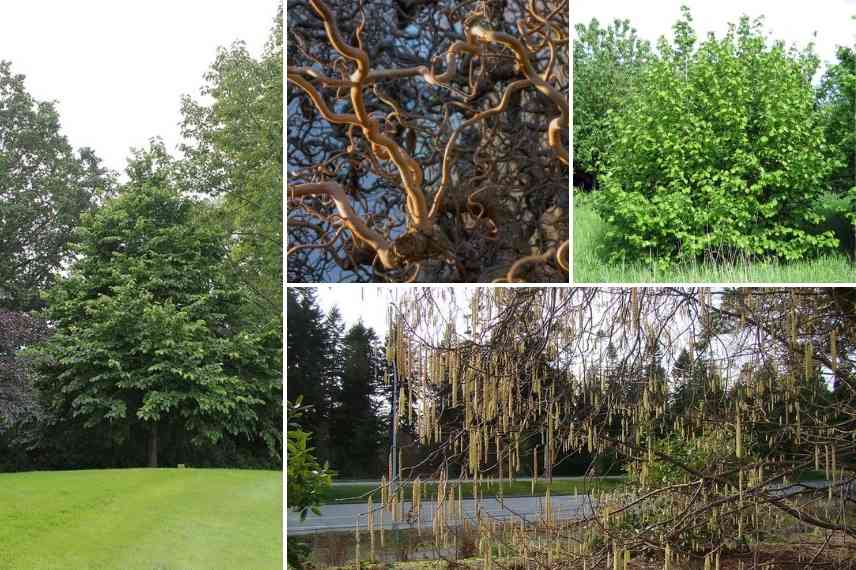
Corylus colurna (Photo: T. Sheerman), Corylus contorta, Corylus avellana, Corylus maxima (Photo: W. Cutler)
For foliage colour
Perhaps it’s the colour of the foliage that most inspires you when buying a hazel if you want to harmoniously pair it with other existing foliage in the garden or create interesting contrasts. Hazels, all deciduous, always develop a golden-yellow or orange-yellow foliage in autumn before shedding leaves late (except purple varieties).

Warm tones of foliage in autumn, right a hazel in December, one of last to lose leaves (Photo : G. David)
So it’s the colour hazel displays during spring and summer that will make the difference in your choice. Bear in mind that its leafing is late, the bud burst period (emergence of leaves) usually occurring in May, but hazel retains its foliage until mid-December depending on region: they all have downy leaves on both surfaces, strongly veined, and range from 7 to 15 cm.
- Golden foliage : only one cultivar offers this clear, radiant colouring: Corylus avellana ‘Aurea’, with golden-green, almost orange foliage that takes on a light-green tint in summer. It brings a great deal of brightness and is best planted in full sun.
- Green foliage: many varieties develop mid-green to dark-green foliage: among these, Corylus colurna has large ovate dark-green leaves about 12 cm, doubly dentate. Corylus avellana ‘Contorta’ has mid-green leaves, as does Corylus avellana ‘Webb’s Prize Cob’.
- Purple foliage : several cultivars exist, which provide a very interesting sense of depth in a garden. Attractive for their ornamental colour, they should not, however, be over-used. The darker foliage of these varieties is beautifully enhanced by evening light, which gives them blazing tones! These purple foliages are perfect in a wild garden, but also suit a more modern setting. Be tempted by:
Corylus colurna ‘Te Terra Red’ produces reddish-purple leaves in spring that gradually turn purple-green. Corylus maxima ‘Purpurea’ is a bush 4 m high with magnificent dark purple, almost black leaves in summer, creating a superb contrast in a natural garden. Corylus avellana ‘Rode Zellernoot’ has purple leaves that turn bronze-green in summer.
Bright foliage of Coryllus avellena ‘Aurea’, mid-green leaves of Corylus avellana contorta, and purple of Corylus avellana ‘Rode Zellernoot’
Discover other Corylus - Hazelnuts
View all →Available in 1 sizes
Available in 4 sizes
Available in 1 sizes
Available in 3 sizes
Available in 1 sizes
Available in 3 sizes
Available in 1 sizes
Available in 2 sizes
Available in 1 sizes
Available in 1 sizes
For the catkins colour
Flowering of hazels largely accounts for their charm and appeal during long winter months. Bush or tree then brings real magic and interest to garden, with its ultra-luminous, pendulous caterpillar-like flowers, swaying in the wind, during coldest part of winter. This display is provided by male catkins, female catkins— which appear just afterwards — remaining inconspicuous (only red stigma can be seen, and then only from very close up). Although male aments appear compact as early as summer at tips of shoots, they ripen from January, lengthening to around ten centimetres, first a yellow-green colour then golden yellow when their long pendulous aments unfold (between February and March depending on climate and variety).
Most impressive catkins, because the longest, up to 12 cm, are found on Byzantine hazel. Different varieties of Corylus maxima also bear long catkins (6–8 cm), while the shortest (still 4–6 cm) are from Corylus avellana.
Catkins, grouped in threes or fours, are mostly golden yellow, but some display purplish tints :
- Yellow catkins are very pale on contorted hazel (Corylus avellana ‘Contorta’), a bright luminous yellow on hazel ‘Aurea’, a pale yellow for Corylus avellana ‘Webb’s Prize Cobb’
- Red catkins bring a very colourful and highly visible note to the bush. They correspond to varieties with purple foliage: Corylus maxima ‘Red Filbert’, Corylus maxima ‘Purpurea’ and Corylus avellana ‘Rode Zellernoot’ bear brown-red aments,
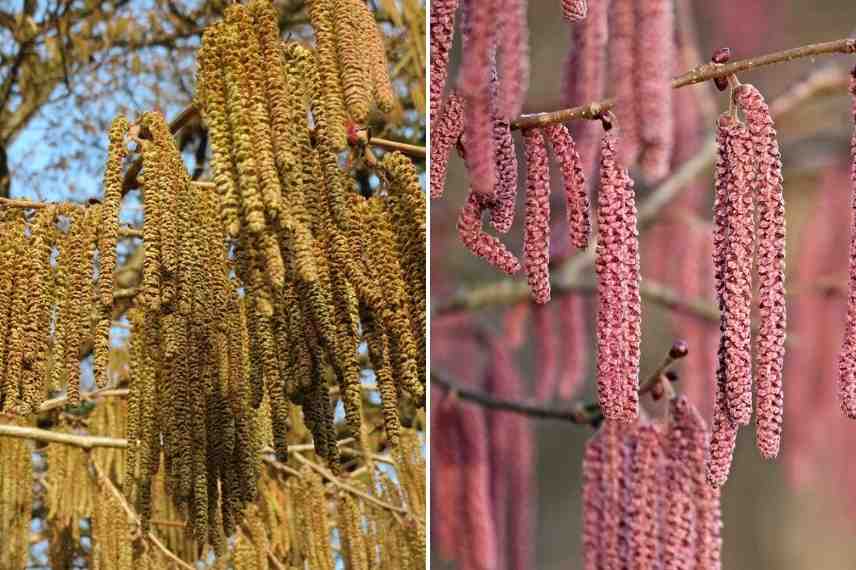
Sublime yellow and red catkins of hazels in winter
For hazelnuts
Hazel can obviously be used more as a fruit tree, offering succulent nuts in their shells that can be stored for several months, and which you would plant either in an orchard or in an ornamental garden. In that case, quality and yield of hazelnut production are prioritised.
Hazel is monoecious (it bears both male flowers and female flowers on the same plant). Female flowers come into full flower a few weeks after male flowers, so it is important to plant at least two hazels, of different variety and flowering period, so that pollination is effective.
Production reaches its maximum from about 8 years, up to 20 years (bearing in mind that the bush or tree lives between 60 and 100 years). You can start to harvest when the tree is around 5 years old. Harvest takes place between late August and early October. Purple-leaved varieties also produce excellent nuts, although they are often used more for their ornamental value.
Your choice will be based on one or more criteria :
- Large nuts
Corylus ‘Buttler’ produces large, slightly elongated nuts, as does Corylus ‘Coxford’; ‘Fertile de Coutard’ yields large round nuts among the biggest and very fragrant, ‘Nottingham’, ‘Géant de Halle’ bears large orange-brown nuts with firm flesh. - Flavour
Taste is quite subjective, however some hazelnuts stand out for particular flavour: Corylus ‘Longue d’Espagne’ is sweet; Corylus ‘Nottingham’ and Corylus ‘Fertile de Coutard’ are very fragrant. Corylus maxima ‘Purpurea’ produces nuts with sweet, aromatic flesh. - Very productive varieties
Corylus avellana ‘Webb’s Prize Cob’ is a very productive variety with elongated nuts, late flowering and very hardy. ‘Fertile de Coutard’ and ‘Nottingham’ are very vigorous and productive, Corylus ‘Segorbe’, with small nuts, is productive and vigorous. Corylus ‘Coxford’, with elongated nuts ripening in late August, is particularly productive. - Early varieties
‘Fertile de Coutard’ produces large nuts from late August, ‘Nottingham Frühe’ can be harvested from mid-August. - Late varieties (late September to early October)
The Hazel ‘Géant de Halle’, Corylus ‘Merveille de Bolwiller’ whose nuts ripen mid-September, Corylus colurna ‘Rouge de Zeller’ which yields between September and October, Corylus avellana ‘Webb’s Prize Cob’, Corylus ‘Coxford’ harvested in late September and Corylus ‘maxima Purpurea’ between September and October. - Hardy varieties
Here are the hazels most resistant to cold, for regions with particularly harsh winters and springs: Corylus ‘Longue d’Espagne’, Corylus ‘Géant de Halle’ and ‘Merveille de Bollwiller’, suited to cold regions because of their late flowering.
Squirrels adore hazelnuts (it’s no myth, as they are rich in fats and therefore highly prized by rodents in winter) and if you have hazels at home you may witness their comings and goings along the trunk and branches… But you will not be able to evict them, and that would indeed be a pity…
Depending on use
Offering varied habits and colours, hazel can be used in many garden contexts, blending into a hedge or back-of-garden edge, serving as a focal point, in an orchard and even on a terrace. It grows up to 1700 m altitude, providing a wide range of uses across France.
As an informal hedge or copse
Hazel originates from leafy forests and understorey of western Europe and Asia. With a bushy habit and requiring little pruning, it naturally finds its place in this type of planting and enhances it. For this bocage-style hedge use, choose the tallest varieties, 3 to 4 m, spaced about 5 m apart, the tree often presenting a spread of 4 m with its look of a large shrubby clump. Corylus avellana is specifically suited to planting in an informal hedge. In a copse it can be mixed with the golden-leaved variety Corylus avellana ‘Aurea’ and associated with hornbeam, elder, hawthorn, amelanchier and other bushes that will reinforce this natural aspect and help create biodiversity habitats for birds and wildlife.
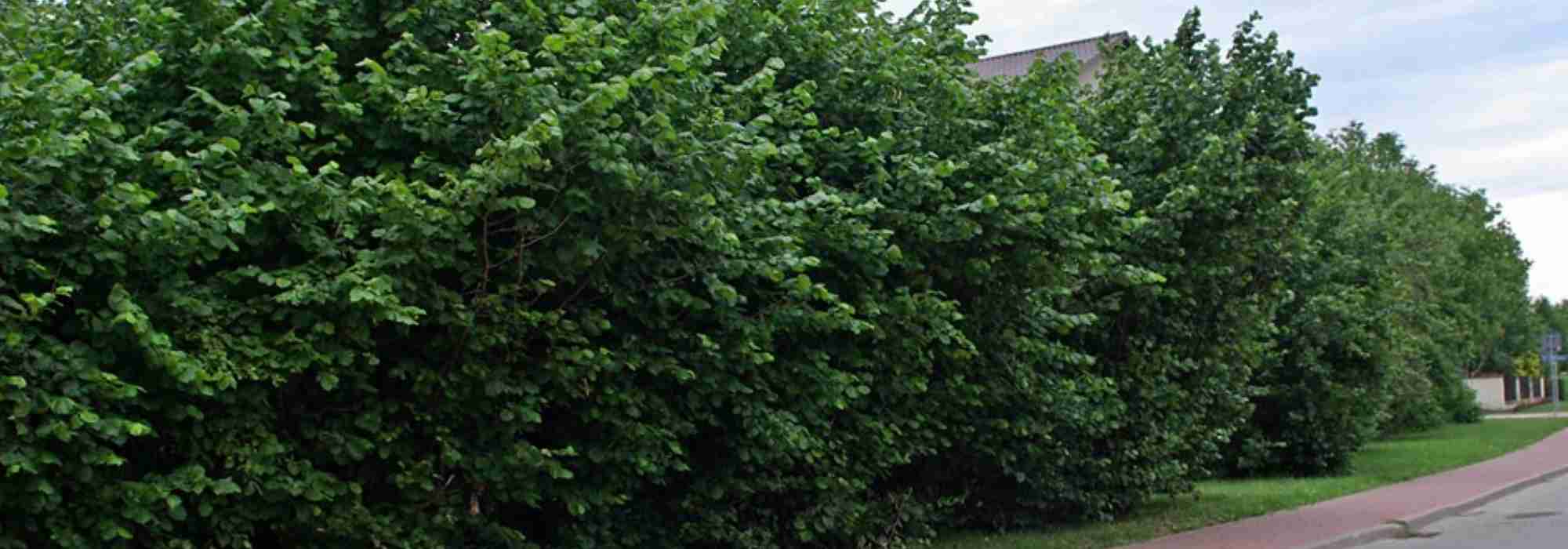
As a standalone specimen
Hazel’s majestic habit makes it an ideal specimen in medium or large gardens. Weeping varieties (Corylus avellana ‘Pendula’) or contorted forms (Corylus avellana ‘Contorta’) should be planted in a well-chosen position to showcase their extraordinary habit, especially in winter. The purple form of the contorted hazel Corylus avellana ‘Red Majestic’, compact, is an attractive eye-catcher for its purple foliage in summer. A Byzantine hazel has its place in a large garden or park as a beautiful structural tree. Corylus avellana can also be planted as a solitary specimen, bringing plenty of natural character to a wild garden.

Corylus avellana and Corylus contorta
In a row
The silhouette of the Byzantine hazel, conical with a single trunk, makes it particularly suitable for planting in a line in urban areas. Tolerant of difficult growing conditions and air pollution, it is highly ornamental, creating a line of considerable height across large spaces and open horizons.
As a screen
Despite its deciduous foliage, hazel can work very well as a screen thanks to its vertical, well-branched and dense structure, which can hide an unattractive background for example, or serve as a garden boundary in a free hedge. For this use, plant in groups of three specimens to best conceal the unwanted view.
In a container or for a small space
New very compact hazel cultivars are suitable for container planting if you have no garden, or if your garden is small, and if you are a keen consumer of hazelnuts! This is the case for the very pretty dwarf variety Corylus avellana ‘Scooter’, about 1 m in height and spread.
The eccentric contorted hazel (Corylus avellana ‘Contorta’) is also an interesting cultivar for pot culture: its limited development and slower growth suit this planting mode. It will bring plenty of whimsy to a balcony or terrace.
Corylus avellana ‘Webb’s Prize Cob’, medium-sized (3 m in every direction) is perfect in a small garden.
Additional uses of hazel
Young branches are very useful when a chestnut is not to hand and you want to make a wattle fence (or pleaching) for vegetable or ornamental garden borders, to make ‘tontines’ or to train climbing plants. Hazel is also ideal for erecting very attractive lattice screens, pairing well with terraces or small contemporary gardens.
Once eaten, the shells can be used as mulch: they make a pretty, fairly long-lasting brown mulch that will silver over time and allow you to recycle abundant harvests!
Finally, the mythical divining rod… and the fairy wand are both made of hazel… Plenty of opportunity for a few joyful craft workshops with your children!
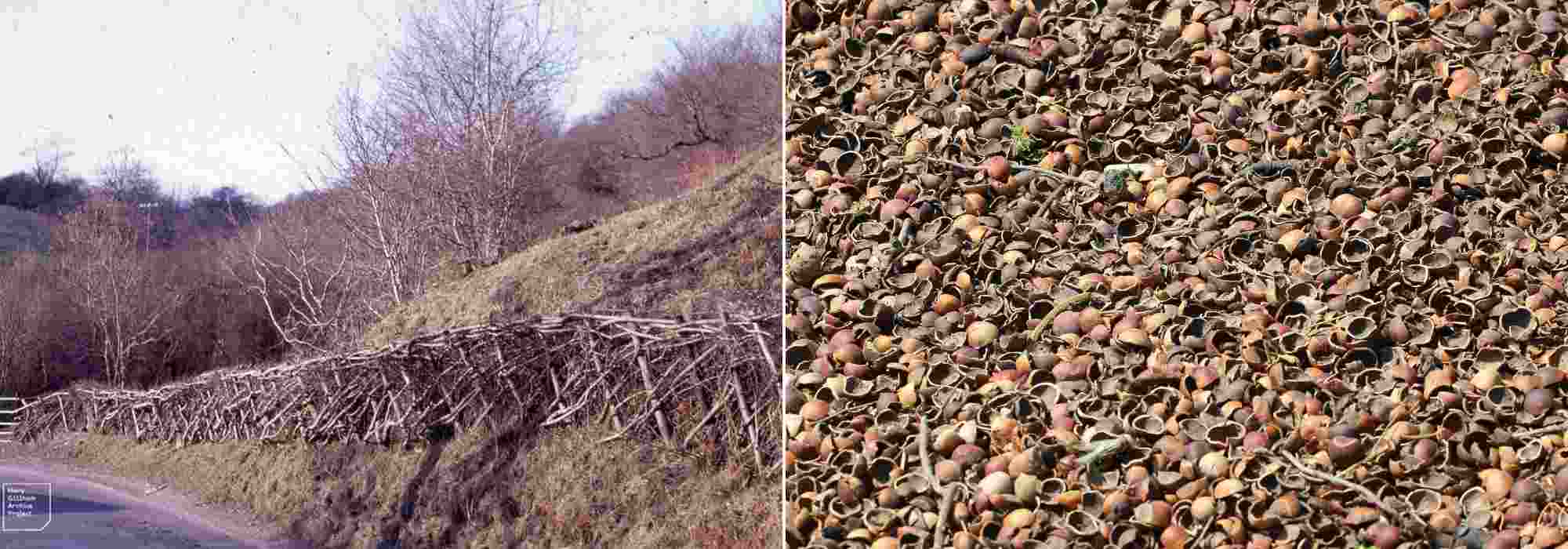
A hazel pleaching (Photo M. Gillham), and hazelnut shells repurposed as mulch
Depending on the soil
Hazel prefers siliceous-clayey soils but it also grows well in calcareous soil. Rich, moist and deep soils suit it for proper development, the important thing being that soil is well drained. However, it does not tolerate waterlogged soils, which will inevitably bring parasitic organisms and diseases.
- Subscribe!
- Contents
































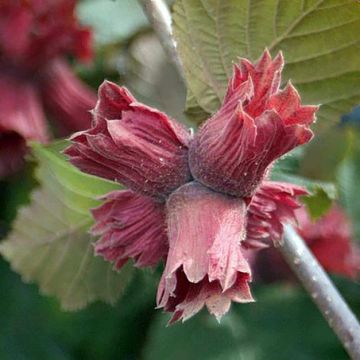
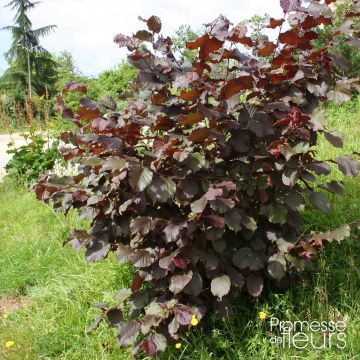
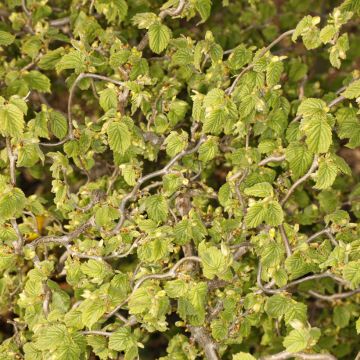
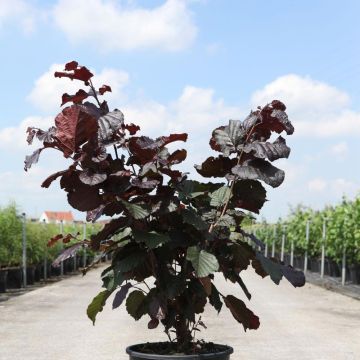
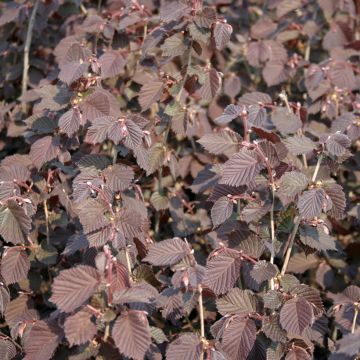
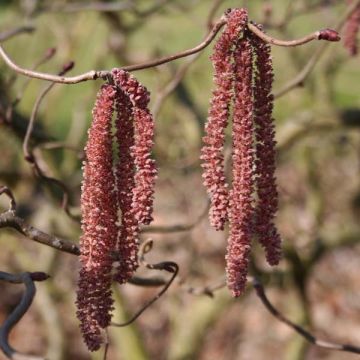
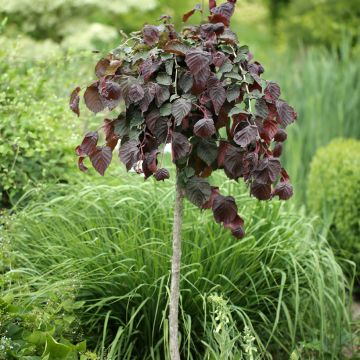
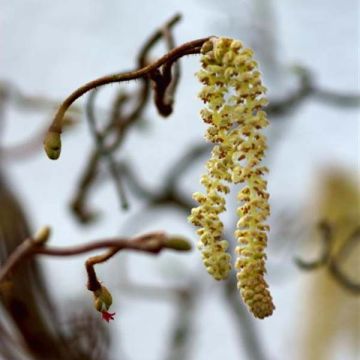
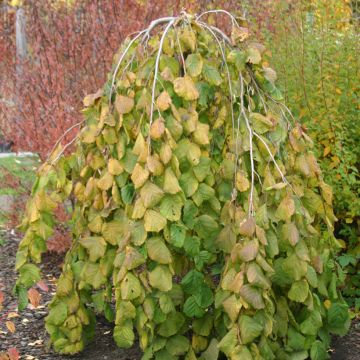
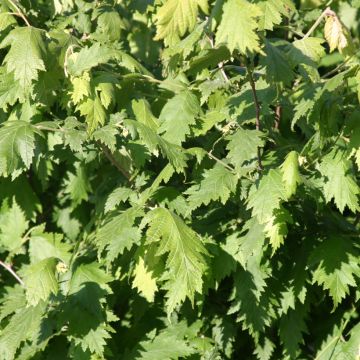
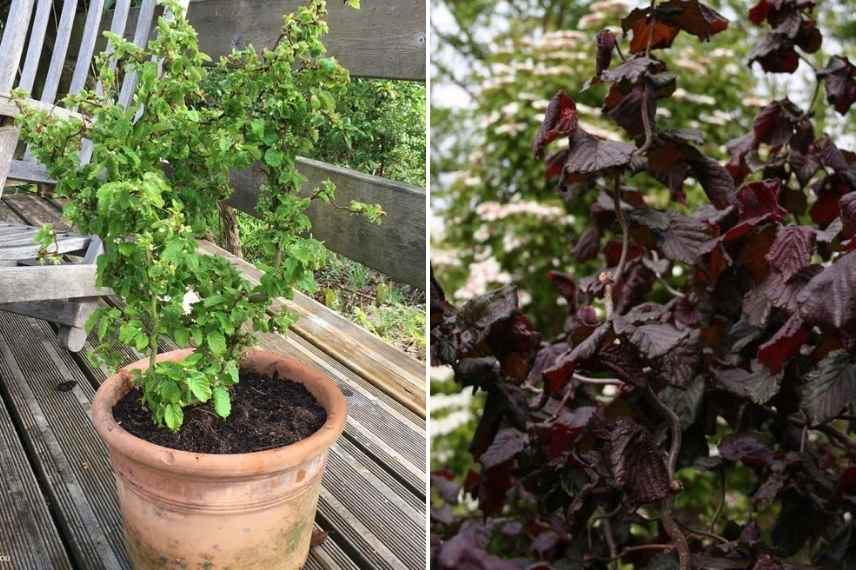
Comments